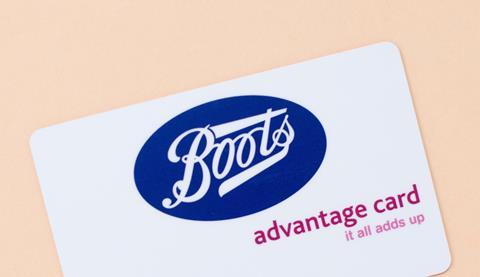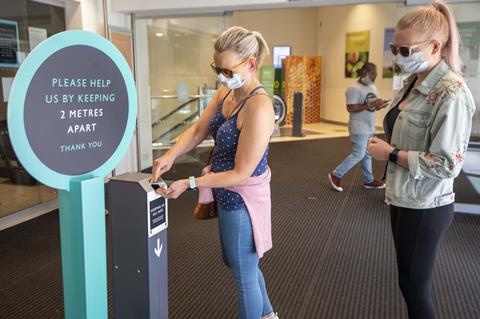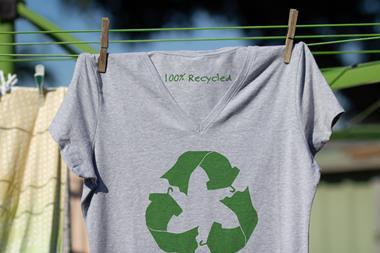PROMOTIONAL RESEARCH
The way people shop has undergone a total transformation this year with retailers having to take heed and step up. Retail Week scrutinises the business characteristics required by retailers to cater for the new consumer.

There aren’t many positives that the year 2020 will be remembered for. Yet, it was the year that the world stood still but retail kept moving.
It was the year in which retailers upped their game, retail staff became essential to the continuation of society and virtual boardrooms made some of the biggest decisions they have ever faced.
As we edge towards the end of this tumultuous year there is a lot that can be learnt from all that has happened.
Being as close as possible to your customer and having an intimate understanding of their individual behaviours has arguably never been more important.
Retailers across the globe have recalculated the ways in which they do business, with many now altering their priorities for 2021.
But what do those who are thriving have in common? By analysing the traits they share, we have hit on five killer ways to serve the newly evolved shopper and ultimately get them spending more.
1. Use customer data to provide personal shopper journeys
Businesses need to be data-driven now more than ever before, with insights providing critical information about ever-shifting consumer behaviour.

With data, retailers can not only create targeted and relevant content and products but also help improve customer retention with personalised marketing and individualised customer journeys.
In a bid to create a more personalised shopping experience for its customers, Walgreens Boots Alliance (WBA) is using Microsoft’s technology alongside data from across its loyalty scheme, ecommerce and store network.
The health and beauty group is combining previously these disparate customer data sets, including information from more than 100 million members of its loyalty programmes, into a more singular, unified view of the customer.
This information allows Boots to offer a bespoke beauty experience for customers by enabling Boots Beauty Consultants to provide custom product recommendations.
Furthermore, shoppers who have used their Advantage Card to buy products in store will then be served offers on that product online when they are due to run out or sent push notifications on their app when they are near a store that has the item in stock.
Catherine Shuttleworth, chief executive of retail marketing specialist Savvy, says: “Data should shape the focus of retail businesses and inform what the shape of the organisation should look like – which are the areas of the country that need more physical space and where do they need less.
“Data could be used strategically to drive shoppers back into the store but this needs to be balanced with the lack of shopper appetite to visit physical space – don’t lose the sale even if it’s online.”
“Retailers able to weld online and offline seamlessly perform much better than those that think strictly in channels”
Futurologist Howard Saunders says it has finally become clear that “retailers able to weld online and offline seamlessly perform much better than those that think strictly in channels”.
He adds: “Data that enables this seamlessness is precisely what retailers should be investing in. This really is the future of retail. So much energy has been spent on personalising product when in reality what we want is a personalised shopping experience.”
The Hut Group has too been focussing on what it can achieve using its customer data and has created a ‘customer science’ function in order to gain extensive insights from its billions of customer data points. This includes using analytics to segment its customers and personalise the online customer journey through elements such as geolocation.
2. Make technology work more efficiently
There are huge amounts of new technology out there on the market but it’s not necessarily the all-singing all-dancing advancements that retailers now need but instead the things that will simply help shoppers complete their purchases in the safest and most efficient way possible.

John Lewis and Waitrose, for example, launched a pilot for virtual queuing technology in stores to eliminate physical queues and protect customers in August.
John Lewis said the technology would give customers “real-time visibility” of the virtual queue so “they can wait in the comfort of their own car or a cafe while also monitoring their position in the line”.
Marks & Spencer is also piloting drive-thru order collection as part of an initiative with technology partner Doddle to extend its click-and-collect proposition.
Patrick O’Brien, UK retail research director at GlobalData, says post-pandemic the needs of consumers have changed in ways never seen before and as a result the technology they invest in needs to reflect this.
“Retail’s winners in 2021 will be those that prepare, react and adapt the quickest”
“AI is all very good at using historical data to make assumptions about future buying decisions, but unfortunately it can’t cope so well with events not previously experienced before,” says O’Brien. “Essentially, retailers have to be more agile than ever before in how they react to changes in the way we shop, pushed by changes in the way we live and work.”
He adds technology which enables the ability to switch stock and to communicate changes effectively and quickly to customers is worth investing in. “Retail’s winners in 2021 will be those that prepare, react and adapt the quickest,” says O’Brien.
3. Adapt marketing to suit the new world
Acquiring and retaining shoppers is critical, particularly as we ramp up towards Christmas.
In an altered world, forever changed by the pandemic, along with Brexit and the Black Lives Matter movement, being socially conscious has become integral and, for some, marketing campaigns may need total reinvention and redesign in order to strike the right chord.
Earlier this year Cadbury’s ditched its Easter campaign, which featured two children visiting their grandparents, and instead replaced it with its ‘This doesn’t need to end’ campaign, which celebrated small acts of kindness, really capturing the sentiment of lockdown life.
“Who knows? We might see a return to personalised direct mail this Christmas”
And it’s not just the content of marketing that needs addressing but also the platform.
With ongoing consumer sentiment suggesting that the boost to online shopping will remain, digital marketing and omnichannel strategies must take the fore, says Savvy’s Shuttleworth.
She adds: “The challenges of photo shoots and complex TV advertising in a period where social distancing still needs to take place means that we will see a very different approach to marketing – simpler campaigns, different creative approaches and a return to direct communications. Who knows? We might see a return to personalised direct mail this Christmas.”
In September it was announced Asda was bringing back it’s ‘Asda Price’ campaign to promote a £100m investment in reducing prices on thousands of own-brand and branded products.

Chief executive Roger Burnley said the £100m investment made by the grocer into lowering prices was a direct response to the financial strains being placed on consumers by the economic effects of the pandemic and recession.
As part of the campaign, Asda has updated its Asda Price jingle and ’pocket tap’ in a new TV advert starring a “real-life Asda family”.
Despite the lure of shiny new campaigns, Saunders says the number one priority for retailers is reassurance.
“There is no magic wand or silver bullet. No slick marketing campaign, however seductive, can erase our nervousness. Gentle reassurance can be the only strategy,” he explains.
“This ‘reboot’ has also left us hypersensitive and increasingly cynical of corporate overpromises. In a sense, retailers have felt the harsh slap of reality.”
Christmas campaigns are likely therefore to lack the opulence and indulgence of previous years and will instead potentially focus on the heroes of 2020, whether that be NHS employees, retail staff or essential workers.
4. Re-examine customer loyalty
A good or bad experience has the power to make or break a retailer and with this comes loyalty.
The coronavirus crisis has created even more discerning shoppers who expect a lot for their money.
Over half of consumers (51%) surveyed said regular discounts and offers for subscribers would encourage them to be loyal
Loyalty isn’t just about loyalty cards – and with wallets stuffed full of various loyalty cards – it certainly doesn’t signal loyalty to one retailer by having its card.
At a RWRC virtual event in August, Peter Pritchard, chief executive of Pets at Home, described loyalty as “having an understanding of the needs and the environment of your consumer and responding accordingly”.
Shoppers these days don’t have much time on their hands and want things quickly and easily, whether that be from one-touch payments, to being able to collect items from the comfort of their cars.
Removing any barriers to efficient purchasing is key to building loyalty as it will keep shoppers coming back.
Emotional bonds formed between a shopper and a store can make all the difference when deciding where or how to shop.
Consumers want experiences that resonate with them and their current situation, whatever that might be, and these may change on a daily basis.
In a Retail Week survey, over half of consumers (51%) surveyed said regular discounts and offers for subscribers would encourage them to be loyal.
Savvy’s Shuttleworth says: “Loyalty schemes that give real benefit to shoppers as the squeeze on the economy starts to be felt will be welcomed, we can expect shoppers to be returning to couponing, deal hunting and looking for discounts.”

Marks & Spencer re-launched its loyalty card Sparks in July after making changes in response to customer views.
The revamp, which launched in July, includes abandoning points in favour of instant rewards “to deliver immediate and clearer value” and more personalised offers.
Subscriptions could perhaps be seen as the ultimate loyalty programme. Pret is a recent example where for £20 a month customers can get up to five drinks a day, which it hopes will get consumers choosing it over its competitors.
In offering a subscription, the payment pain point is taken out of every transaction, interactions are increased and a relationship is built, fostering loyalty in the long run.
5. Give shoppers what they want virtually
With the in-store experience now unable to provide the personal elements that it once did, retailers are now turning to the online sphere to give their customers both personality and personalisation.
Virtual consultations have helped to leverage the expertise of in-store staff to aid consumers make buying decisions from the comfort of their own homes.

Despite stores now reopening, Dixons Carphone’s video consultation service ShopLive has remained a constant following positive feedback during lockdown.
Dixons Carphone retail director Mike Carslake said the technology had seen the emergence of a new way for customers to shop. Dixons shop assistants working on ShopLive no longer do it from their home as they previously did but now showcase products from inside stores.
Lewis has also moved its in-store services online, offering experiences such as advice for expectant parents, home interiors guidance and online masterclasses for cookery and gin.
Meanwhile, French fragrance brand Lancôme launched its first virtual flagship store which aims to provide shoppers with the browsing experience that the online world lacks.
The new store, which was open for just a month for shoppers in Singapore, offered an “immersive” 3D experience.
“Our brands are creating more personalized and engaging consumer experiences with amazing digital services like virtual try-on, diagnostics, and live streaming – all this is building relationships between brands and consumers,” said Jean-Paul Agon, L’Oréal group’s chairman and chief executive officer.
Without the pandemic these ideas may never have come to fruition yet it seems they may remain long after Covid has been beaten.
Inside the mind of the new shopper
Consumer 2021 brings you a week of multichannel content dedicated to the future shopper, with online debates and content featuring the leaders of some of the biggest UK retailers. Learn more here.
The virtual events, available on demand, are a must-attend for any retailers who want to succeed in 2021. Sessions include:
- Retail in 2020: Who got it right?
- The great customer experience redesign
- What you need to thrive during tough economic times
- The 2020 consumer trends that are here to stay
You can view the full schedule here. To watch Tuesday’s session on demand click here and to watch Thursday’s session on demand click here.


























No comments yet